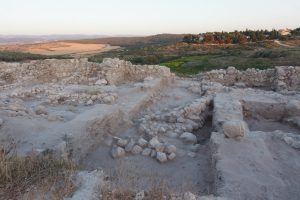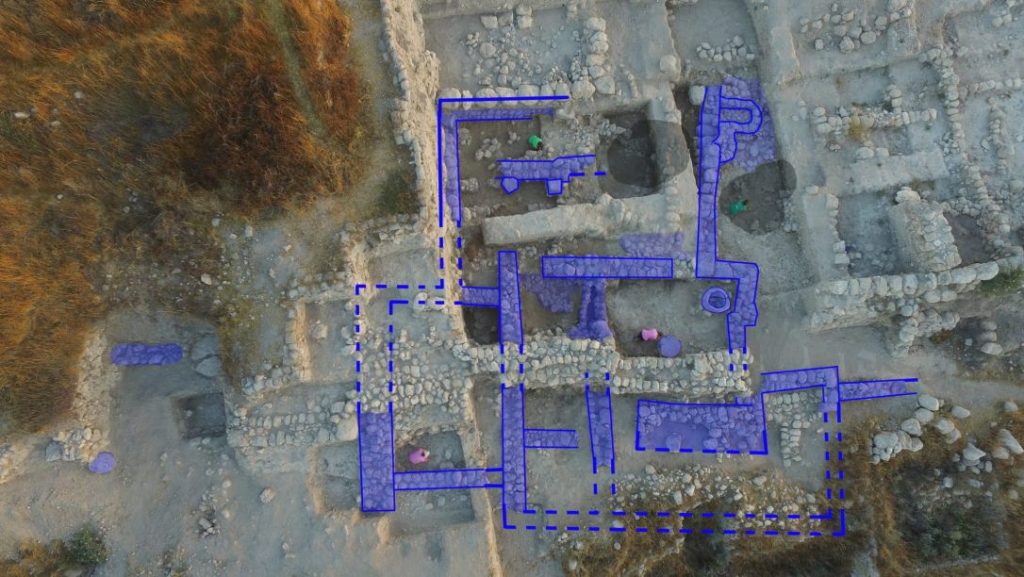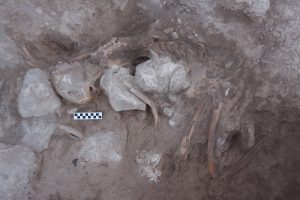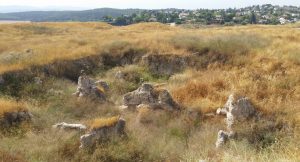
EXPLORING LATE BRONZE AGE CHRONOLOGY AT TEL GEZER
By Lyndelle Webster, Heritage Excavation Fellowship Recipient
With the support of a 2017 Heritage Excavation Fellowship,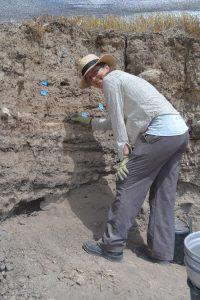
There are two excavation teams currently working to address important research questions at Tel Gezer. The expedition led by Dr. Steve Ortiz of Southwestern Baptist Theological Seminary and Dr. Sam Wolff of the Israel Antiquities Authority, have been working near the Iron Age gateway (central-southern edge of the tell) for the past ten years. Another team from the Israel National Parks Authority and New Orleans Baptist Seminary have been exposing an impressive water system, now dated to the Middle Bronze Age; for the past few seasons they have also worked in the nearby Middle Bronze gateway.
My PhD research concerns Late Bronze Age chronology from the perspective of radiocarbon dating, and it is in this context that I began doing some work in cooperation with the Tandy excavation, whose directors kindly gave me the opportunity to work on their material. Whilst the Iron Age has been the predominant focus of research, in the past few seasons a series of early Iron Age and Late Bronze Age strata have been excavated. For me, this provided a great opportunity to extend my research, which had begun with the Late Bronze strata of Tel Azekah – another important current excavation in the Shephelah region.
2017 was the last year in the field for the Tandy excavation team before going to publication stage. As such, it turned out to be a very exiting and productive season. A thick destruction layer was exposed, including complete vessels and much evidence of burning. Remains of three individuals were found who had clearly died as a result of the dramatic event. The excavators currently identify this destruction with the historically-recorded campaign of Merneptah in the late 13th century BCE. In the Merneptah Stela – famous for the first known reference to “Israel” – the pharaoh boasts of conquering several cities in southern Canaan, including Gezer. In another inscription Merneptah describes himself as the “subduer of Gezer”. These references make it clear that Gezer was a strategic, important site, and gaining control over it was worth boasting about.
Aerial view of Field W, highlighting the Late Bronze Age stratum
which ended with a dramatic destruction event.
My role in the field this season was to provide support in regard to sampling for radiocarbon dating. When working with radiocarbon samples and data it is incredibly valuable to have firsthand knowledge of the archaeological contexts. Working together with the team in the field gave opportunity to discuss and evaluate contexts, and put in focused efforts to improve the number of good contexts yielding suitable material. (The target material is short-lived organics, typically seeds; at a site like Gezer these are mainly carbonized – having been preserved by burning.)
In addition to working with the excavation near the Iron Age gateway, I had the opportunity to carry out some small projects elsewhere on the tell, sampling from exposed sections left by the Hebrew Union College excavations that were conducted in the 1960s to 1980s under the direction of William Dever.
View southward across the tell; Field VI in the foreground
was excavated in the 1960s-70s by Hebrew Union College.
I am looking forward to seeing how new radiocarbon data from Tel Gezer contributes to our understanding of the Late Bronze Age, as well as other key periods under investigation at the site – the Iron and Middle Bronze Ages.
One of the best things about excavation is the people you meet and the friendships developed. It is always a little daunting to start working with a new site and a new team. I appreciated the warm welcome from the ‘Gezerites’, who quickly made me part of their team. It was a great season and wonderful group of people to work with. Thank you!
I want to express my sincerest thanks to ASOR and to Mr. Sheldon Fox, the donor for this fellowship, for supporting my field research this year.
Lyndelle Webster is a PhD student at Macquarie University and the University of Vienna. She is currently based in Vienna at the Institute for Oriental and European Archaeology at the Austrian Academy of Sciences, where she is a member of the project “Tracing transformations in the southern Levant: from collapse to consolidation in the mid-second millennium BC”.
